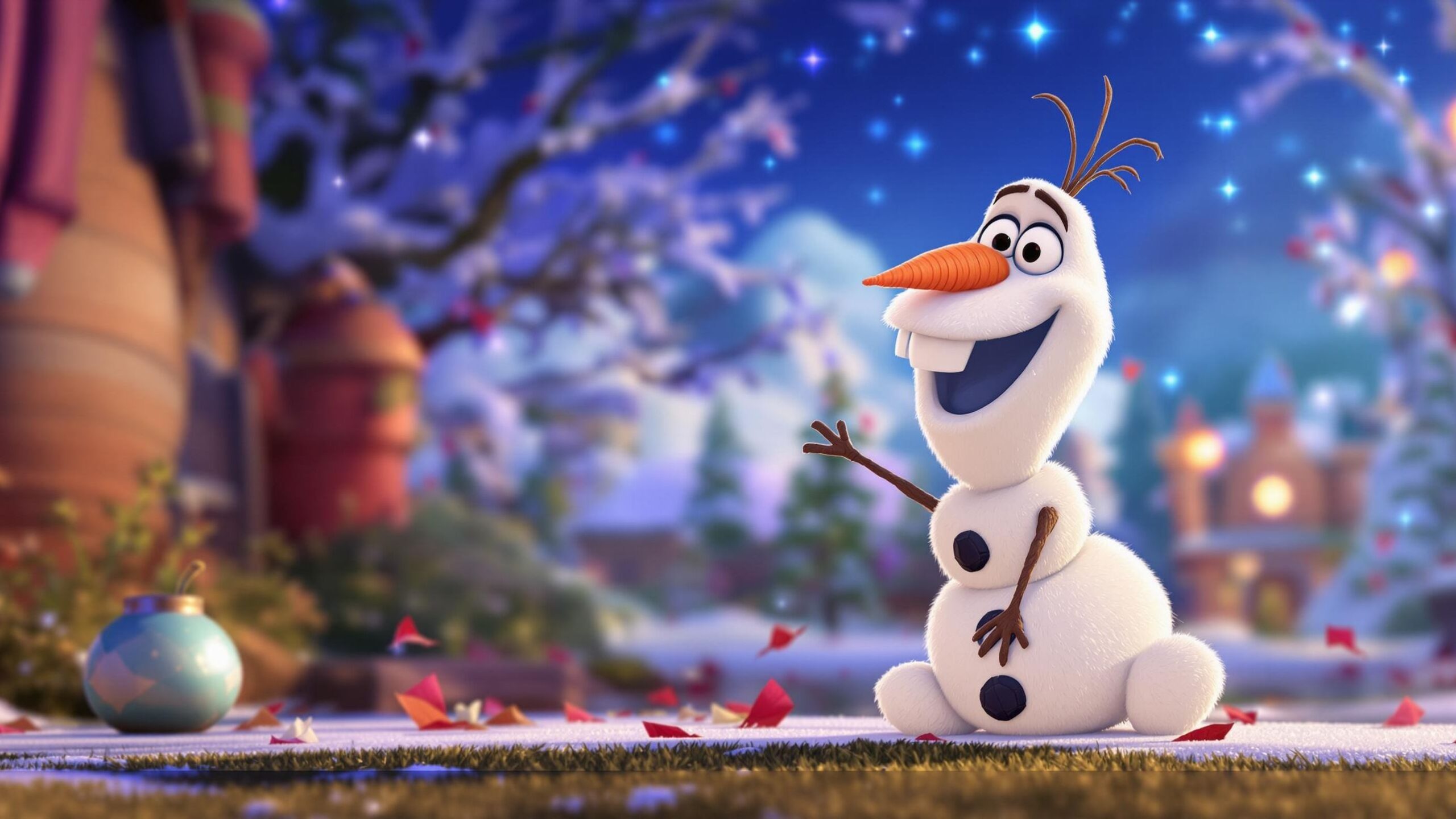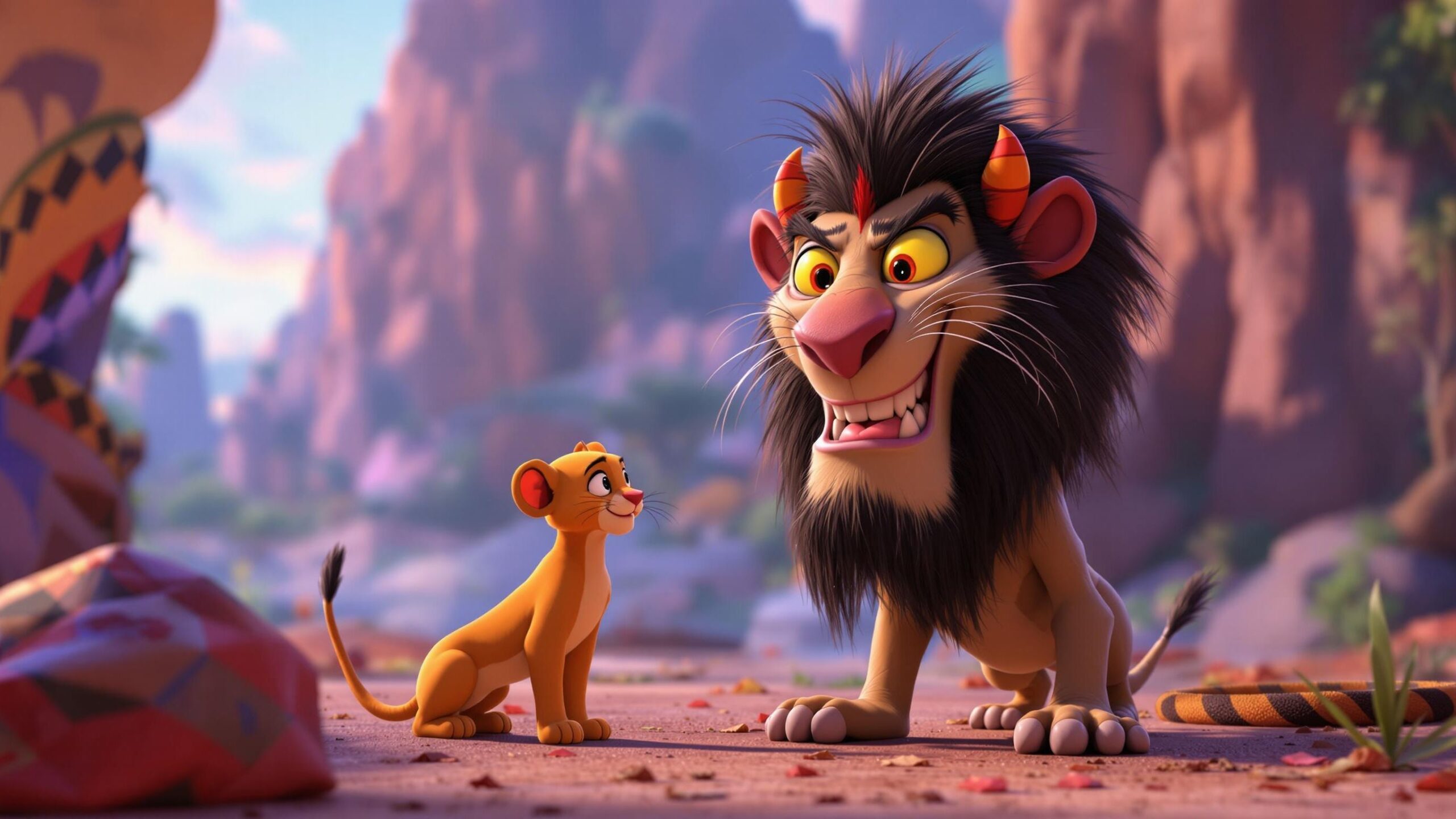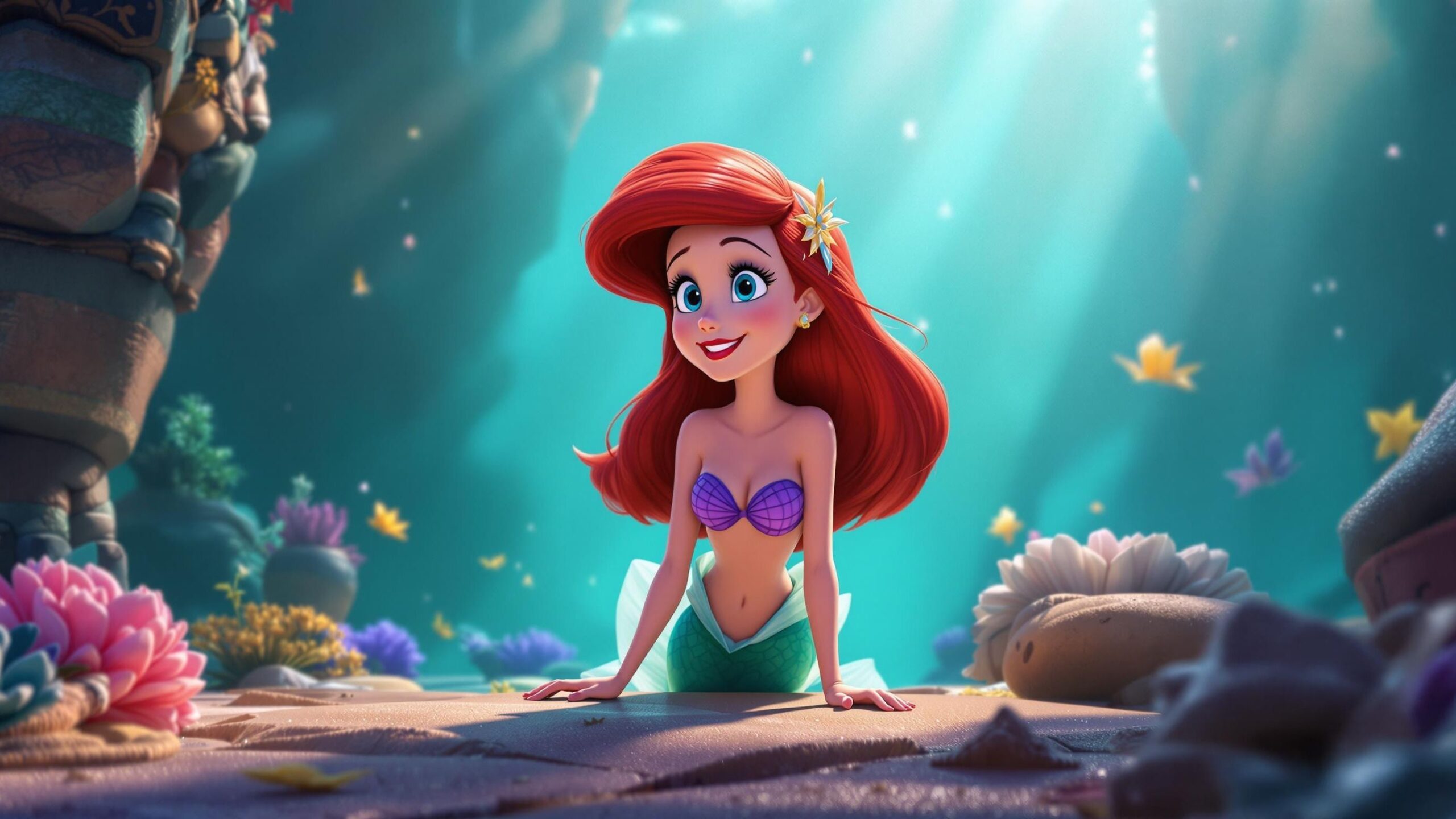When you think of Frozen, your mind probably goes to Elsa’s show-stopping “Let It Go,” Anna’s unshakable optimism, or maybe even the snowy majesty of Arendelle. But nestled between the ice powers, epic songs, and royal drama is a little snowman who somehow manages to steal the show every single time. Olaf isn’t just comic relief—he’s the emotional core, the glue that holds it all together (despite literally falling apart from time to time). With his innocent charm, childlike wonder, and surprisingly profound insights, Olaf is the heart of the Frozen franchise. Let’s melt into why that is.
The Magic of Olaf’s Creation
Olaf isn’t just a snowman—he’s a memory made real. Born from Elsa and Anna’s childhood joy, Olaf is literally sculpted from the magic of their bond. When Elsa reawakens her powers in her Ice Palace during “Let It Go,” it’s no accident that Olaf is one of the first things she brings to life. He’s more than a cute creation—he’s a manifestation of their happiest moments as sisters, a living embodiment of love and play. That backstory immediately gives Olaf emotional weight. From the moment he wobbles onto the screen, we sense that he’s more than just a walking punchline—he’s a piece of their hearts.
Comic Relief That Actually Matters
Let’s not downplay the laughs—Olaf is hilarious. Whether he’s fantasizing about summer (“Some people are worth melting for… just maybe not right this second!”), falling apart in dramatic fashion, or mispronouncing “Kristoff” for the fiftieth time, his comedic timing is flawless. But here’s what makes it special: Olaf’s humor never feels forced or irrelevant. In a franchise that frequently delves into grief, fear, isolation, and identity, Olaf provides moments of levity that are perfectly timed to keep the emotional balance in check.
When Arendelle is on the brink of freezing over, Olaf’s antics lighten the mood. When Elsa or Anna is struggling with overwhelming self-doubt, Olaf is there with an awkward hug or a hilariously sincere question. He keeps things grounded. His humor doesn’t distract from the story—it enhances it. He reminds us that even in the darkest snowstorms, laughter matters.
Pure Innocence in a Complicated World
Olaf is, in many ways, a child. Not just in his naivety, but in his boundless curiosity and unconditional love. He wants to know everything—why the sky is blue, why people blink, what happens to water when it disappears. But instead of making him feel simple or dim, these traits make Olaf wise in a way that only children can be.
He’s the one who believes in everyone. He assumes the best, trusts without hesitation, and sees magic in the mundane. In a kingdom full of complex relationships and emotional wounds, Olaf is a breath of fresh, snowy air. He reminds everyone—including us—that the world is beautiful, that people are good, and that being kind doesn’t have to be complicated. His sincerity cuts through layers of royal formality and magical mayhem like sunlight through ice.
The Emotional Glue of the Group
Elsa has powers, Anna has bravery, Kristoff has reindeer—and Olaf? Olaf has heart. In both Frozen and Frozen II, Olaf is the one who checks in on others, who senses when something’s off, who holds everyone together when things begin to fall apart (again, even when he literally falls apart). He’s more emotionally intuitive than he gets credit for.
In Frozen II, as the characters travel into the unknown, Olaf voices the very real fear of change. He sings “When I Am Older,” a comical but also heartbreaking ode to the desire for clarity and stability. He talks about things changing, people growing up, and feelings getting too big to manage. For a snowman who loves warm hugs, Olaf surprisingly explores the colder themes of life with more depth than anyone expects. He is, quite literally, the emotional narrator of the story.
“Some People Are Worth Melting For”
This line. This moment. It’s the mic-drop of Frozen. When Olaf risks melting to stay with Anna as she’s freezing solid, he delivers what might be the most emotionally devastating and heartfelt line in the entire film. It’s simple. It’s sweet. And it hits like a sleigh full of feels.
In a story where characters are learning what love really means—how it’s not about grand gestures or fairy tale romances—Olaf embodies love at its purest. Selfless. Honest. Warm. He doesn’t overthink it. He doesn’t ask for anything in return. He just shows up and stays. In that moment, Olaf isn’t just a magical snowman—he’s love personified. It’s the kind of loyalty that makes you want to hug a snowman and never let go.
Olaf in Frozen II: Existential Crisis, but Make It Adorable
Olaf’s evolution in Frozen II deserves its own spotlight. While the first film established him as a joyful goofball, the sequel adds complexity to his character in the most surprising way. Suddenly, Olaf is pondering the mysteries of life, wondering if things will make sense “when [he is] older.”
He grapples with the unknown, voices concerns about Elsa’s powers, and even questions the permanence of relationships. It’s a bold move for a character that could’ve easily stayed in the realm of comic relief, but instead, Olaf becomes the lens through which we, the audience, process change.
He’s all of us—confused, overwhelmed, trying to hold onto what’s familiar in a world that’s shifting fast. And yet, he never loses his warmth. Olaf’s existential musings make him one of the most relatable characters in the franchise, especially for viewers who have grown up with the films and are now facing their own big questions.
Olaf’s Recap of Frozen: The Greatest Scene in Disney History?
Okay, that might be a bit dramatic… but let’s be real: Olaf’s retelling of the events of Frozen in Frozen II is comedy gold. His over-the-top performance, complete with dramatic reenactments, exaggerated voices, and totally sincere delivery, is not only laugh-out-loud funny—it’s genius storytelling.
This sequence somehow catches up newcomers, delights fans, and gives us a breather in the midst of the plot-heavy sequel. It’s also the moment that cements Olaf as more than just part of the team—he is the team’s storyteller, the emotional historian. He remembers what happened not just factually, but emotionally. It’s the past through Olaf’s heart, and that’s a beautiful thing.
The Voice Behind the Snowman: Josh Gad’s Secret Sauce
Let’s take a moment to appreciate the genius of Josh Gad. His voice work as Olaf is pure lightning in a bottle. Gad brings Olaf to life with a perfect blend of wide-eyed wonder, comedic sharpness, and emotional sincerity. He doesn’t just read lines—he becomes Olaf.
You can hear it in the way he delivers every “I don’t have a skull… or bones,” and in the soft tenderness behind his most sincere moments. Josh Gad’s performance is what gives Olaf his soul. Without it, Olaf might’ve been just another quirky sidekick. With it, he’s unforgettable. His delivery balances heart and humor in a way that makes Olaf instantly lovable to kids and adults alike.
Olaf and the Kids: Why He’s the Real MVP for Families
Let’s be honest—Olaf is the character kids quote, mimic, draw, and obsess over. There’s a reason Olaf plushies fly off store shelves and why he’s often the first character little ones fall in love with. He’s safe, silly, soft-edged, and endlessly comforting.
In a franchise with queens, monsters, trolls, and enchanted forests, Olaf is approachable. He asks the questions kids are too shy to ask and reacts the way many of them would in wild situations—with wide eyes and wonder. He doesn’t scold or preach. He listens, laughs, and learns. He’s the snowman who teaches kindness, honesty, and how to embrace emotions, all wrapped up in giggles and carrot-nose chaos.
Olaf in Frozen Fever and Once Upon a Snowman
If Olaf shines in the Frozen films, he absolutely sparkles in the spin-offs. In Frozen Fever, the charming short film that takes place shortly after the original movie, Olaf gets to revel in the joy of a sunny spring day… with a few sneezy surprises. Elsa’s magical sneezes accidentally spawn tiny baby snowmen—Snowgies—that Olaf gleefully corrals like an overly enthusiastic babysitter. While Anna’s birthday is the focus, Olaf’s enthusiasm (and struggle to keep the Snowgies in line) steals the show. It’s another perfect moment that shows his unconditional love for the sisters, his knack for chaos, and his total delight in life—even when things are falling apart around him (again, often literally).
Then there’s Once Upon a Snowman, the Disney+ short that gives Olaf his very own origin story. And wow, it’s an emotional gem. We follow Olaf’s first few minutes of life after Elsa unknowingly creates him during “Let It Go.” He doesn’t know who he is or where he belongs—but he feels that he’s meant for something joyful. Watching him explore Arendelle, discover his love for warm hugs, and choose his own carrot nose is a masterclass in storytelling. It adds even more depth to Olaf, showing that even in the chaos of magical transformation, he’s a being of pure optimism. This short proves that Olaf’s charm isn’t tied to screen time—it’s baked into every snowy inch of him.
Olaf’s Holiday Specials: A Snowman for Every Season
If you needed even more proof that Olaf is the heart of the Frozen franchise, just look at how Disney keeps building entire stories around him. In Olaf’s Frozen Adventure, a festive holiday special, Olaf takes on a noble quest: to find the perfect tradition for Elsa and Anna to share during their first real holiday season as a family. What follows is a snowy sprint through Arendelle as Olaf visits townspeople, learns their customs, and tries (with increasingly hilarious results) to carry them back to the castle.
While this special is packed with humor—burning trees, collapsing cakes, and one near-catastrophic encounter with fruitcake—it’s also deeply heartfelt. Olaf is determined not just to help the sisters, but to give them something meaningful. And when he realizes he is the tradition—their shared joy, the symbol of their bond—it’s a moment that could thaw even the iciest of hearts. The entire village gathering to welcome Olaf back, singing “When We’re Together,” is the kind of emotional payoff that only this snowman can deliver. It’s cozy, it’s moving, and it reminds us that Olaf isn’t just a seasonal mascot—he’s part of the family.
Hidden Symbolism: Olaf as a Mirror for the Audience
Beyond his jokes, his hugs, and his musical numbers, Olaf works on a symbolic level. He represents something rare in modern storytelling: emotional transparency. He says what others won’t. He asks questions we’re too afraid to ask. In a world full of masks—royal duties, magical expectations, societal pressures—Olaf wears no armor. What you see is what you get.
That’s why he resonates so deeply with audiences of all ages. Kids love him because he’s fun and silly. Teens relate to his confusion about change and growing up. Adults find themselves unexpectedly teary when Olaf says things like “This is fine,” while slowly sinking into a snowbank. Olaf is the child in all of us, still holding onto the hope that things will make sense, that love wins, and that curiosity is never a bad thing. He’s Disney magic distilled into a walking, giggling, melting metaphor.
Fun Facts That Make Olaf Even Cooler
Let’s take a detour and share some fun behind-the-scenes magic that adds to Olaf’s charm. Did you know that Olaf’s design was meant to be slightly imperfect on purpose? Animators gave him asymmetrical features, stubby legs, and unbalanced twig arms to reflect his spontaneous creation—he’s supposed to look like a kid built him. His wonky shape makes him more relatable, and way more adorable.
Josh Gad improvised a surprising number of Olaf’s lines, adding to his quirky and unpredictable nature. For instance, the now-iconic “I don’t have a skull… or bones” wasn’t in the original script—it was a Gad original. His playful input shaped much of Olaf’s personality, making him feel less like a scripted character and more like a friend who wandered out of the snow and into our lives.
Also, Disney’s creative team spent months developing how Olaf’s movements would work. Because he’s not bound by bones or joints, his physical comedy could be uniquely animated—spinning heads, falling apart, flailing limbs—it all had to be choreographed carefully to look chaotic and cohesive. Every movement is a miracle of animation.
Olaf’s Warm Hug Legacy
So, what’s Olaf’s legacy? More than a trail of snowflakes and melted puddles, Olaf leaves behind something rare in cinematic storytelling—an emotional warmth that endures. He’s not the main character. He doesn’t have powers. He doesn’t ride into battle or wear a crown. But he is the heartbeat of Frozen.
He keeps the tone joyful, the lessons meaningful, and the love alive. He’s the reminder that even in a world of magic and mayhem, the most powerful thing you can be is kind. Olaf has taught us that bravery can be soft, love can be goofy, and sometimes, the smallest voices carry the most weight.
Olaf’s Future: Endless Possibilities in Snow
As the Frozen universe continues to expand (yes, Frozen 3 is officially happening!), fans are buzzing about what’s next for Olaf. Will he stay in Arendelle as a kind of snowy ambassador of joy? Will he get another existential solo about the mysteries of the universe? Will he finally experience summer without turning into a puddle?
Whatever happens, Olaf’s role is secure. He’s the heart of the Frozen saga, and Disney knows it. Whether they keep him front and center in movies, shorts, or theme park adventures, Olaf will always be the character who brings us back to what matters most—connection, kindness, and curiosity. He doesn’t need a new power or a tragic backstory. Olaf is already powerful in the way he makes us feel.
A Heart Made of Snow (and Love)
At a glance, Olaf might look like a goofy snowman with a carrot nose and a knack for falling apart. But when you look a little closer, you see something much bigger. Olaf is the living symbol of everything Frozen stands for: love, resilience, wonder, and the warmth that binds us together.
He’s there when Elsa feels alone. He’s there when Anna needs support. He’s there when we, the audience, need a break from tears or tension. He makes us laugh, then makes us cry, and somehow always reminds us of what’s worth holding onto.
In a franchise filled with dazzling ice castles, stirring anthems, and breathtaking animation, it’s the snowman with the biggest heart who holds it all together. Olaf may not have bones or a skull, but he has something even stronger: soul.
The Soul of Snow
At the end of the day, Olaf is more than just a lovable snowman—he’s the emotional compass of the Frozen world. Elsa may be the star, Anna the engine, but Olaf? Olaf is the soul. He asks the big questions. He comforts when no one else knows how. He holds the team together with duct tape and carrot logic.
As the Frozen universe expands and continues to enchant fans old and new, Olaf remains its heart—innocent, honest, and full of joy. So, whether you’re watching him slide across the ice, belt out a song about the seasons, or offer up his arms (literally) to help a friend, remember this: Olaf might be made of snow, but he’s the warmest thing about Frozen




